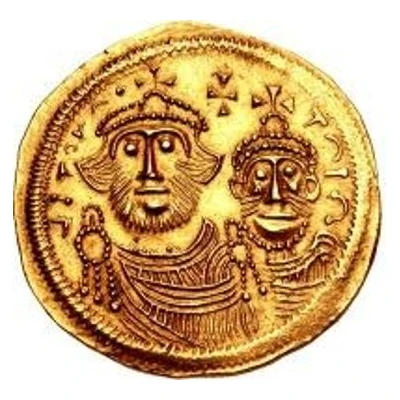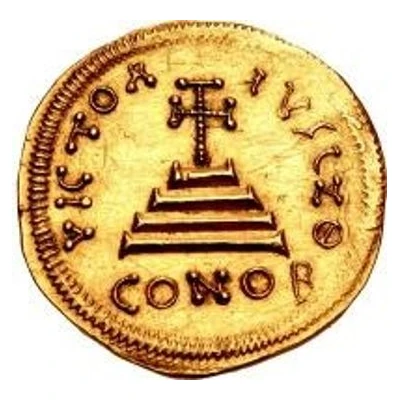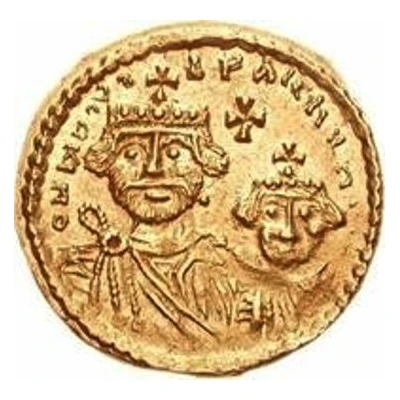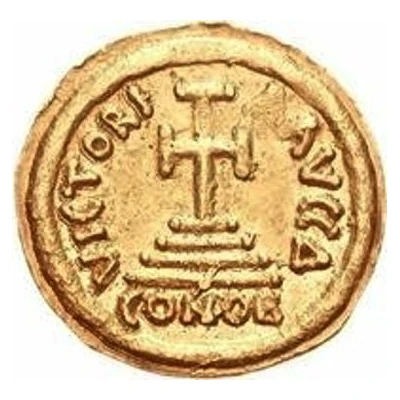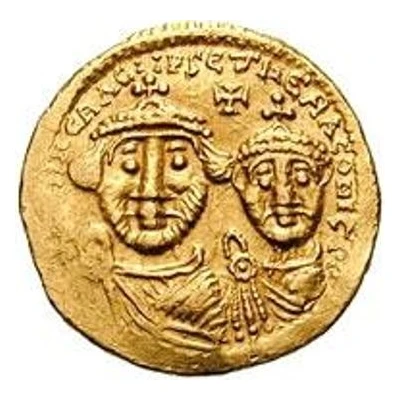
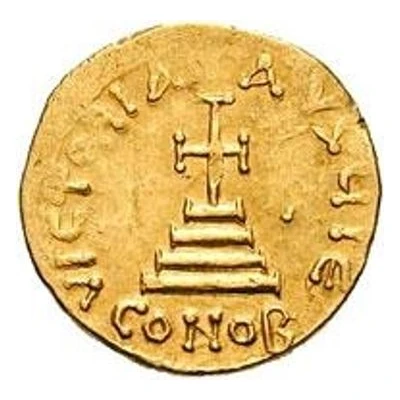

© Classical Numismatic Group, Inc.
1 Solidus In the name of Heraclius and Heraclius Constantine; Cross with flat ends; equal busts with unbroken legend
| Gold | 4.23 g | 22 mm |
| Issuer | Avar Khaganate |
|---|---|
| Type | Standard circulation coin |
| Years | 629-796 |
| Value | 1 Solidus |
| Currency | Solidus (629-796) |
| Composition | Gold |
| Weight | 4.23 g |
| Diameter | 22 mm |
| Shape | Round (irregular) |
| Technique | Hammered |
| Demonetized | Yes |
| Updated | 2024-10-09 |
| Numista | N#151492 |
|---|---|
| Rarity index | 92% |
Reverse
Cross on four steps surrounded by legend.
Script: Latin
Lettering:
VICTORIA - AVGTIIE
CONOB
Translation:
Victoria Augustus / Constantinople
Victory of the August / Constantinople
Edge
Plain
Comment
The exact date-range of these pieces is not certain. For the beginning date, many sources list 610, since that was when Heraclius came into power; however, Heraclius Constantine was only born in 612 (he was Heraclius's son). Some sources say this coin was struck after 616, but seeing as how Heraclius Constantine has a mustache, it was probably much later than that (around 629 would make the most sense).After Heraclius died in 641, Heraclius Constantine took over, ruling for only a couple months. While some sources list 641 as the end date, Heraclius seems younger in the portrait, meaning the original coin was most likely struck before that date. Even so, this is an imitation of a real coin, so it could have been struck anytime after 641. It is unlikely this coin was struck after 796, since that is around when Franks conquered the Avars, so that is the most likely end-date.
Interesting fact
One interesting fact about this coin is that it was issued during the Avar Khaganate, a powerful tribal confederation that played a significant role in the cultural and political history of Early Medieval Europe. The coin's design, featuring a cross with flat ends and equal busts with unbroken legend, reflects the influence of Christianity and the Byzantine Empire on the Avar Khaganate. The use of gold in the coin's minting also speaks to the wealth and power of the Avar Khaganate during this time period.
